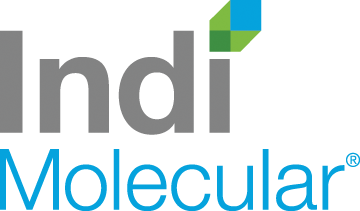Indi Molecular and Institute for Systems Biology Receive U.S. Patent for KRAS-Specific Cyclic Peptides
LOS ANGELES, August 26, 2022 - Indi Molecular today announced that it has been granted U.S. Patent 11,414,460 entitled “KRAS-Specific Cyclic Peptides, Compositions, and Methods of Using and Making” along with Institute for Systems Biology. The patent claims cover compositions and methods for making and using cyclic peptide that selectively binds K-Ras G12D.
“Given the frequency with which KRAS mutations are found in tumors, inhibition of this protein provides a potentially promising avenue for treatment of cancer,” said Albert A. Luderer, Ph.D., chief executive and co-founder, Indi Molecular. “KRAS mutations are present in up to 30% of all tumors, including as many as 90% of pancreatic cancers.”
Indi Molecular’s KRAS program builds on the synthetic platform developed by Indi Molecular and California Institute for Technology on protein catalyzed capture agents. James Heath, Ph.D., president and professor at Institute for Systems Biology, is the lead inventor of the KRAS and PCC technology. Heath is also a co-founder of Indi Molecular and serves as a board member and as a senior consultant for research and development.
“This composition of matter patent covers compounds, compositions, and methods involving cyclic peptides that can bind to KRAS (G12D) oncogenic protein. This is the third issued patent in the KRAS family of patents. The granted patent provides further evidence of the potential use of cyclic peptides in our oncology programs” said Sherri Candelario, Ph.D., vice president of intellectual property, Indi Molecular.
About Indi Molecular
Indi Molecular is an emerging life sciences company that is developing a synthetic class of diagnostic and therapeutic agents with antibody-like properties: protein-catalyzed capture agents. The molecule’s small size (< 4 kD) makes PCCs a synthetic equivalent of a monoclonal antibody but with biophysical properties similar to a small molecule drug. PCCs offer the promise of superior performance, stability, lower cost and faster creation compared to monoclonal antibodies, the current standard for many therapeutic and molecular imaging applications.
